√70以上 elephant rider path model 818834-Elephant rider path model
The rider, the elephant and the path are the guiding metaphors in Switch How to Change Things When Change is Hard by Dan & Chip Heath As described in the beautiful illustration above, the riderThe Elephant, the rider, and the path;The elephant's rider represents the employee's intellect, the elephant represents emotional motivations, and the path represents the change management strategy He notes that the Switch Framework may become more successful if the organization removes as much tension between the rational and emotional mind as possible

Take Your Team On A Fearless Journey Management 3 0
Elephant rider path model
Elephant rider path model-The elephant and the rider Imagine it You're probably picturing yourself or another person on top of an elephant like this More than just a powerful, majestic image, this is a really helpful metaphor for how we all think and act Psychology researcher and professor at the University of Virginia, Jonathan Haidt, coined this concept in his book, The Happiness Hypothesis, as follows 'The•"Motivate the Elephant" tap into the emotion and give feeling to the reasons why you are doing someA ggies Elevatedppp PARENT NEWSLETTER FEBRUARY 17 Change = the Rider, the Elephant and the Path wwwaggieselevatedcom By Sarah Bodily, MS thing Program Director The Rider, the Elephant and the Path, p 1
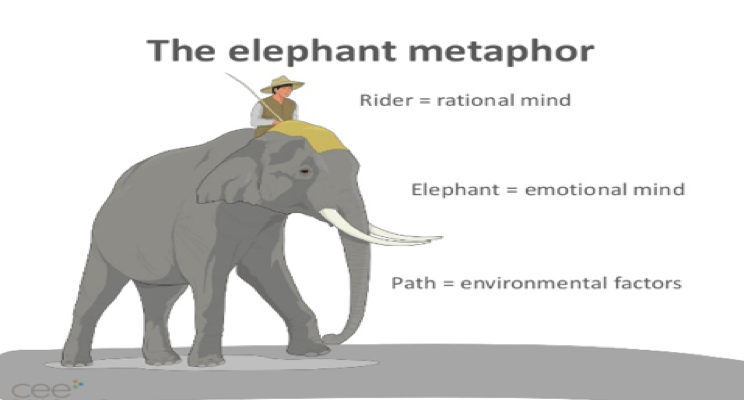


Privacy By Design Archives 3pmobile
The Rider, The Elephant and the Path is a behavioural psychology model originally presented by psychologist Jonathan Haidt in his book "The Happiness Hypothesis" It is an important concept to understand when it comes to creating change in habits, either for the better or the worse, and will guide this articleAnd Part 3, Shape the Path The titles come from a vivid metaphor by University of Virginia psychologist Jonathan Haidt In his book, The Happiness Hypothesis, Haidt likens a person to a rider on an elephantSwitch How to Change Things When Change Is Hard Switch asks the following question Why is it so hard to make lasting changes in our companies, in our communities, and in our own lives?The primary obstacle, say the Heaths, is a conflict that's built into our brains Psychologists have discovered that our minds are ruled by two different systems—the rational mind and the emotional mind
The Seven Habits of HighlyFor all PATH Train Information in New Jersey and New York from Maps and Schedules to Station Updates and Route AlertsThe goal of "Direct the Rider, Motivate the Elephant, and Shape the Path" is a remarkably effective metaphor for effective financial planning, but also serves as a reminder that as financial planners we tend to do some parts far better than others Arguably, financial planners are quite good at directing the rider
The rider is analogous to the conscious/logical/ rational mind while the elephant represents the subconscious/feeling/ emotional mind The rider is the part of the mind that plans, makes preparations, solves new problems, and sets goalsHaidt's analogy has it that the Rider is rational and can therefore see a path ahead while underneath him, the Elephant provides the power for the journey However the Elephant is irrational and driven by emotion and instinctIf you're familiar with Daniel Kahneman's Thinking Fast and Slow , you might also call these System One and System TwoJuly 29, 16 Psychologists have long told us that there are two independent "alwayson" sides of our brain One is the emotional side, the other the rational side NYU psychologist Jonathan Haidt uses a lovely analogy to explain both the emotional side is the elephant, the rational side is the rider The rider of the elephant looks like he or she is in charge, but when there's a disagreement between the elephant and the rider, the elephant usually wins



Researchers Identify Personality Traits Susceptible To Persuasion


Q Tbn And9gcrrdwycl Df8suqqonel1qttbxkvv0p Z7anlx25gma2tszyh 6 Usqp Cau
Haidt provides the helpful metaphor of the rider and the elephant The rider is the conscious mind with its rational functions and volitional power But the elephant is everything else all the internal presuppositions, genetic inclinations, subconscious motives, and layers upon layers of uninterrogated, raw experienceLearn more about the book;The Science of Trust Emotional Attunement for Couples;



The Rider The Elephant And The Path Visual Ly


Shaping A Path Forward For Energy Efficiency By James Riley Medium
Learn more about the book;The KüblerRoss model, They call it "The Rider, The Elephant, and the Path," and it is worth noting that they based it on the work of Jonathan Haidt, a renowned NYU psychologist1page summary of the Rider/Elephant/Path model for your desk Making Presentations That Stick How to give a memorable, sticky presentation More Resources The Books Read the first chapter;
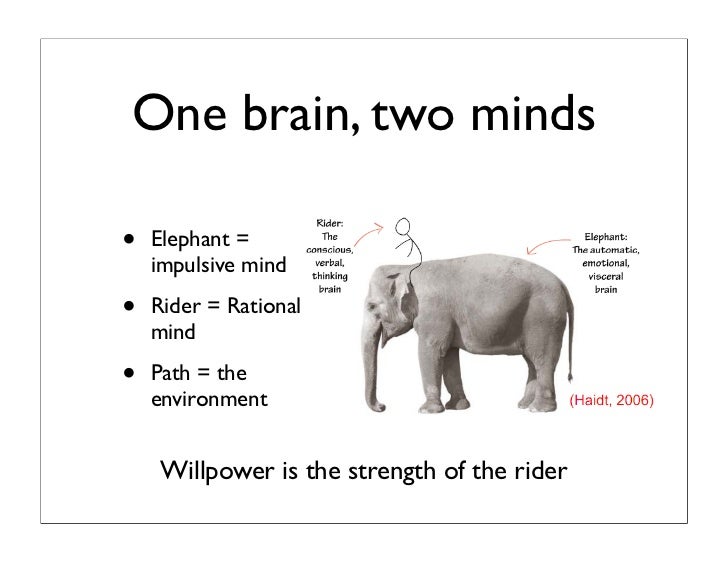


In Summary Rider Elephant And


Switch Metaphor Of Change Bret L Simmons Positive Organizational Behavior Bret L Simmons Positive Organizational Behavior
•"Motivate the Elephant" tap into the emotion and give feeling to the reasons why you are doing someA ggies Elevatedppp PARENT NEWSLETTER FEBRUARY 17 Change = the Rider, the Elephant and the Path wwwaggieselevatedcom By Sarah Bodily, MS thing Program Director The Rider, the Elephant and the Path, p 1Lessons from the Heath brothers Slideshare uses cookies to improve functionality and performance, and to provide you with relevant advertising If you continue browsing the site, you agree to the use of cookies on this websiteRead the first chapter;
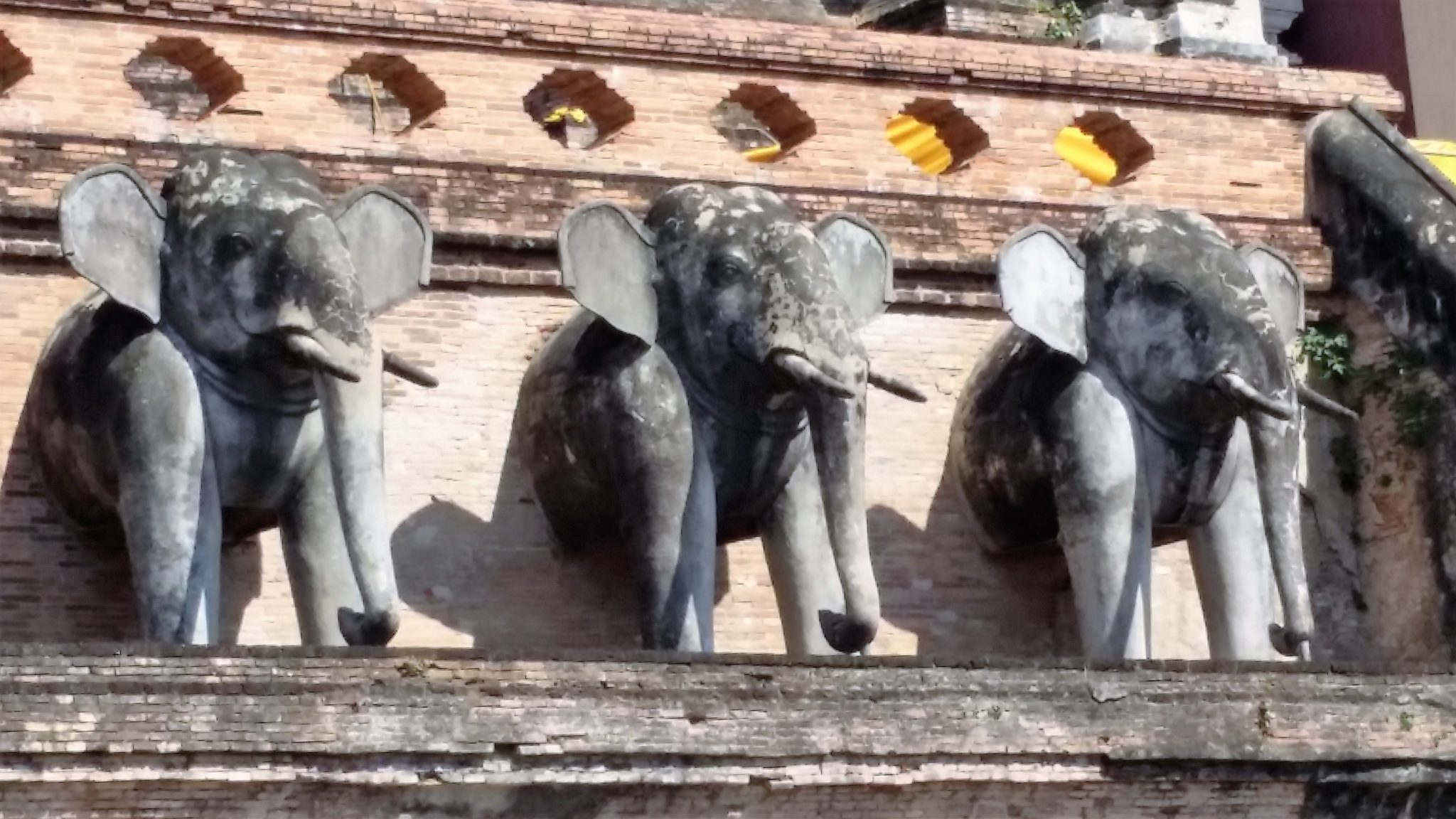


Elephants In The City The Nature Of Cities



The Importance Of An Elephant And A Rider In Your Veterinary Practice
The Rider and the Elephant (not simplistic) model for leading change, and they delight the reader with amazing examples told in a smart, colorful manner the path to change was simplifiedThe elephant rider path Participants in the framework Representation used in slide 5 Barriers The emotional mind The rational mind About the framework The elephant is a metaphor for the conative or emotional mind It represents emotions and attitudes and is the power behind the journey The rider is a metaphor for the cognitive or rational mindHaidt provides the helpful metaphor of the rider and the elephant The rider is the conscious mind with its rational functions and volitional power But the elephant is everything else all the internal presuppositions, genetic inclinations, subconscious motives, and layers upon layers of uninterrogated, raw experience
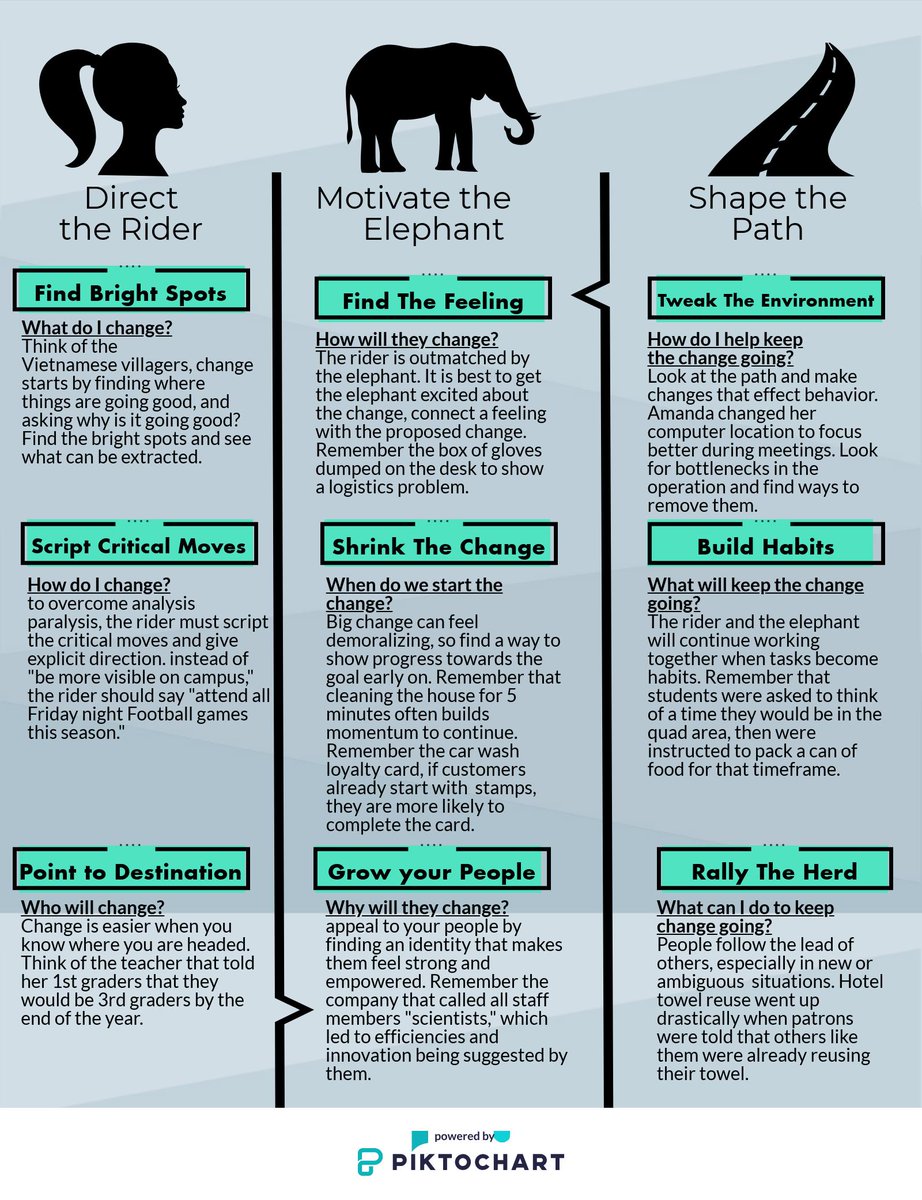


Cjusd Nutrition Business Services Division Just Wrapped Up Our 18 19 School Year Book Study Of Change By Chip Dan Heath This Infographic Is An Effective Recap And Reminder Of


Www Hqsc Govt Nz Assets Primary Care Pr Switch Elephant Oct 18 Pdf
A full body of an African Elephant bull with big ears, trunk and tusks grazing and walking in the bushland of a game park in South Africa Elephant indoor Modern interior with elephant inside (3D renderingAnother reason change often fails is because of our surrounding environment This is known as the "Path" So, to change a behavior, you need to direct The Rider, motivate The Elephant and shape The Path;Haidt describes "the rider" (our logical mind) as a skilled attorney who can construct a logical, sound rationale for any actions that the elephant takes So, where "the rider" can be paralyzed by too many options, "the elephant" needs to feel it is safe to go where the rider is trying to take him 4 Find the Feeling
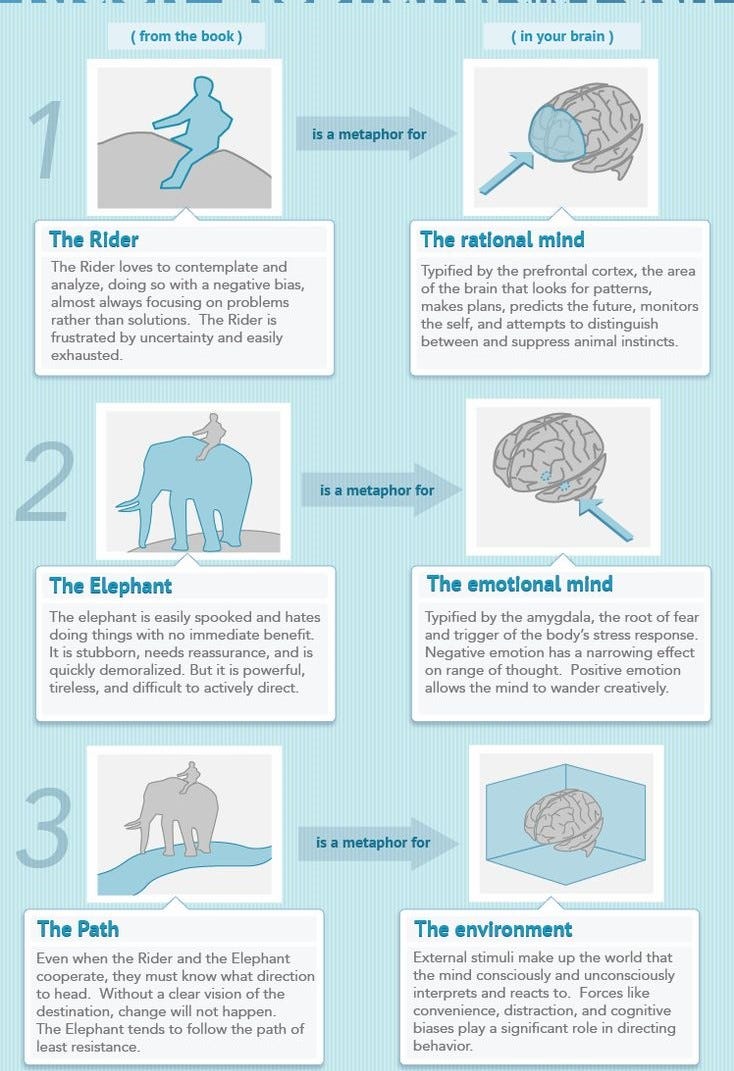


Advise The Rider Steer The Elephant And Shape The Path Heath By Itamar Goldminz Org Hacking Medium



Learn Elephant And Rider Thinking Maps
Read the first chapter;The rider is our rational side The rider understands what we want to do He can have some small effect on controlling where the elephant goes and how he acts But his control over the stubborn elephant is limited Our rational mind can also sometimes be the cause of problems such as procrastination The final metaphor is the path This is the situation you want to changeGiven this framework – Direct the Rider, Motivate the Elephant, and Shape the Path – the Heath brothers recommend a series of 9 strategies to help change behavior Direct The Rider Follow The Bright Spots Investigate what's working and clone it Script The Critical Moves Don't think big picture, think in terms of specific behaviors



The Elephant The Rider And The Path To Change In Health Care


Part 4 A Case Study In Ethiopia Renew Strategies
If the "Rider/Elephant/Path" model gets a bit strained at times, it can be forgiven as it is this model that makes remembering the ideas down the line much easier, and if you don't remember them, you can't act on them Verified purchase No Best Selling in Nonfiction See allThere are two elements of the brain that are engaged when we tackle any task Firstly, there is the emotional side, which is instinctive and feels pleasure and pain Secondly, there is the rational side, which considers options, rationalizes and balances consequences For time and the world do not stand stillRead the first chapter;



Switch Your Association S Approach To Change Management


Prod Media Coolaustralia Org Wp Content Uploads 19 04 Mm Theelephantandtherider Pdf
Shaping the path, the environment where the rider and its elephant move around, is the third dimension of a successful change management strategy Be aware that what looks like a peopleproblem, is often a situation problem Often, when you leave your context or environment as it is but want change to occur, you're headed to be unsuccessfulIt is about instinct not necessarily about reason and analytics Jonathan Haidt wrote about this and gave us a metaphor when he talked about the elephant and the rider The elephant is the emotional side It is the large and difficult to control And the rider is the rational side By Dr Mohamed Gamal Hamed 6 7/4/17 7With Elephant, Rider, Path, behavior change isn't rocket science We know going to the gym is good for us And yet many of us don't do it We know head injuries can be fatal, yet we often ride without helmets Psychologist Jonathan Haidt introduced an analogy that explained this 'irrational' behavior – elephant and rider



Beasts Of Burden Sky History Tv Channel
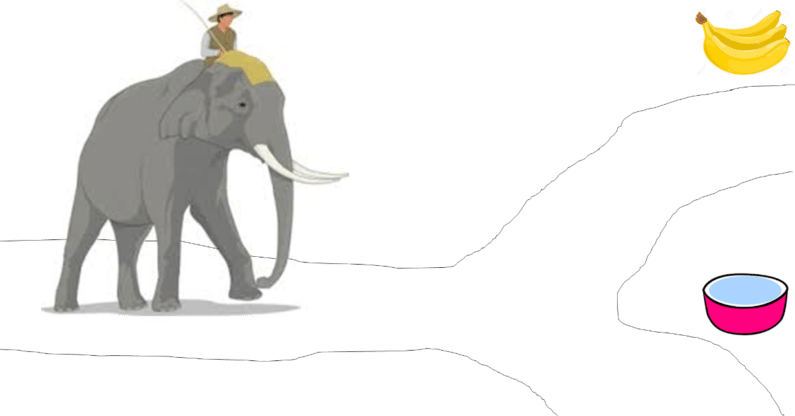


Becoming A Change Agent In The Lives Of Those You Lead What Every Leader Needs To Understand About Influence Leading Saints
The elephant will get the rider to the Treasure Island if the path is clear When elephant fails to see a clear path, the rider looses The path is the environment Alcoholic working as bartender is not ready to be sober Nice book by Chip and Dan Heath Also read "Made to Stick" by same authorsThe Rider is unable to work against the Elephant for long as the effort is too exhausting Leaders must speak to both the Rider and the Elephant for effective change to occur This analogy can help us as a model to guide individuals and organizations through change For successful change to take place, this three elements must be addressed in any situation Direct the Rider It is essential for the Rider to have absolutely clear directionChange isn't easy, but with the right framework, it becomes easier Switch Summary Chapter 1 Three Surprises About Change


Blog Archives Physics A Level



The Rider The Elephant And The Path Eat Crunchy
3) Shape the path You can have a very clear rider and motivated elephant but if the path they are traveling is fraught with pitfalls, scary animals and too many alluring distractions they won't succeed Either the rider will get sidetracked or the elephant will become exhausted, scared or overwhelmed with the desire for immediate rewardOf course, the Path the Elephant walks down matters too Highranking executives can shape that Path, that environment, and make the journey easier even when the Elephant is less motivated 2 2 In Switch , the words Rider, Elephant, and Path represent characters in the mental play that the book describesRead the first chapter;
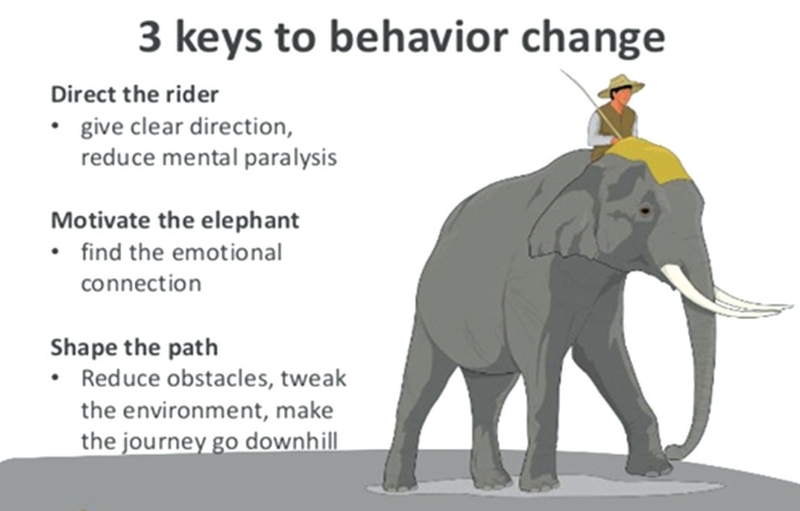


Switch How To Change Things When Change Is Hard New Business Age Leading English Monthly Business Magazine Of Nepal



Change Management Models Actionable Ways To Lead Organisational Change
Metaphor Elephant, Rider and Path To explain their model of change (and to make it memorable) Switch draws on an analogy drawn from Jonatham Haidt's book, "The Happiness Hypothesis" Haidt says that our emotional side is an Elephant and our rational side is its Rider Perched atop the Elephant, the Rider holds the reins and seems to beThe book is organized into eleven chapters in three parts Part 1, Direct the Rider;The Rider, The Elephant and The Path Monday, October 3rd, 16;


Switch Mbaea Mtss Hub



Inside The Elephant Tourism Industry In Thailand The Atlantic
Lessons from the Heath brothers Slideshare uses cookies to improve functionality and performance, and to provide you with relevant advertising If you continue browsing the site, you agree to the use of cookies on this websiteThe Elephant and the Rider Most of us believe that we are in control of our lives, actions, thoughts and emotions I've previously spoken about how this is an illusion, and today I'm going to use an ancient Tibetan thankgka as the illustration for a story I'm naming the story "The Elephant and the Rider", a phrase I borrowed from a book on psychology named The Righteous MindThe Elephant, the rider, and the path;
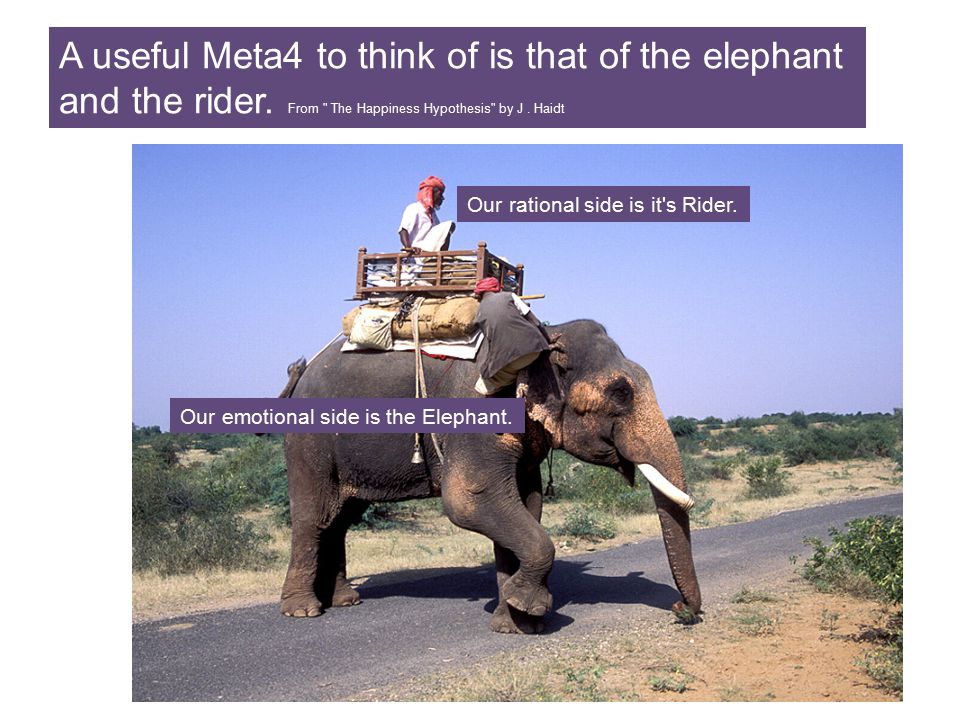


The Rider And The Elephant Ppt Video Online Download



How The Elephant And The Rider Can Help Motivate Your Team
1page summary of the Rider/Elephant/Path model for your desk Making Presentations That Stick How to give a memorable, sticky presentation More Resources The Books Read the first chapter;This is a behavioral psychology mental model that was originally presented by psychologist Jonathan Haidt ( http//enwikipediaorg/wiki/Jonathan_Haidt ) In his book, The Happiness Hypothesis ( http//wwwhappinesshypothesiscom ), he argues that we (humans) have two sides An emotional/automatic/irrational side (the elephant) An analytical/controlled/rational side (its rider)The Path The Path represents the external conditions or environment in which the Rider and the Elephant are trying to get moving in the same direction Using this threepart framework, it is easy to see why so many change initiatives fall well short of their goal
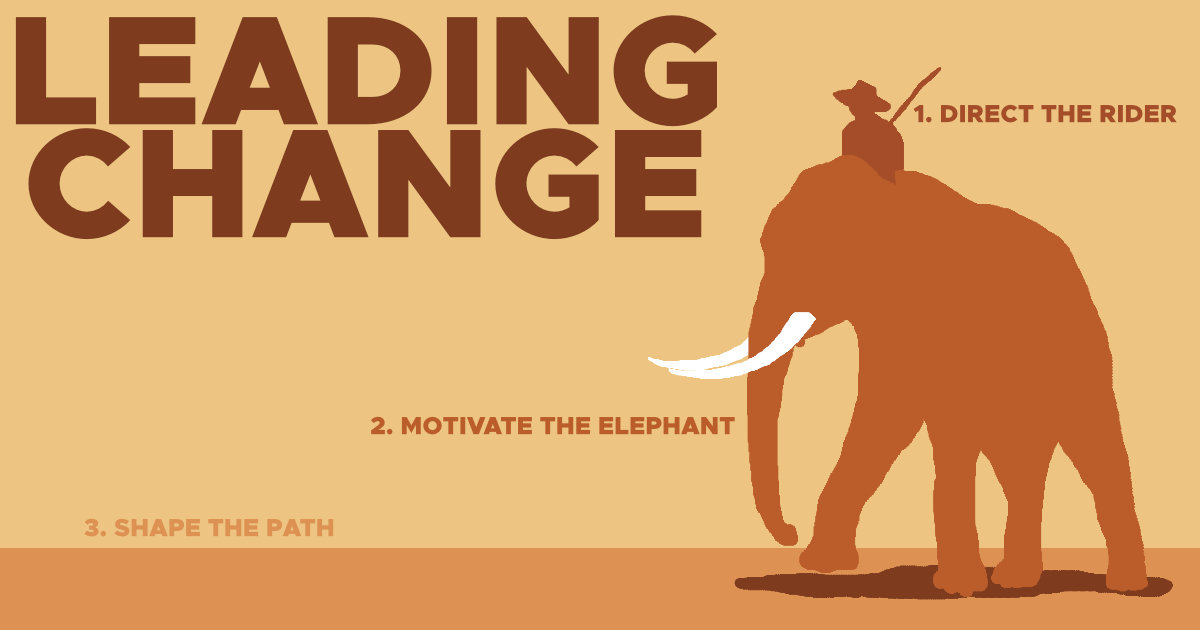


Leading Change Evidence Unseen



The Mahout The Elephant And The Path An Analogy For Change Anecdote
The rider represents the rational mind and the elephant represents emotion Rationally, using our rider, everyone wants to get in shape, but emotionally we want a cookie The rider may want to stay on track and get to his destination, but if the 6 ton elephant decides to take a break, the little rider doesn't have much choiceThe Rise of Superman;BarroMetrics Views The Rider, the Elephant and the Path My apologies for not posting on Friday Please take this as a replacement blog In the new Neurological model of learning, the key initial step is what Coyle calls, 'the ignition process'



The Elephant The Rider Youtube


Q Tbn And9gcq1gfpnckwnhyf02nyoafar9jt1qwwoeucz K3bgav23royz2it Usqp Cau
Learn more about the book;The Elephant and the Rider Most of us believe that we are in control of our lives, actions, thoughts and emotions I've previously spoken about how this is an illusion, and today I'm going to use an ancient Tibetan thankgka as the illustration for a story I'm naming the story "The Elephant and the Rider", a phrase I borrowed from a book on psychology named The Righteous MindLearn more about the book;



It Takes Change To Make Change



With Elephant Rider Path Behavior Change Isn T Rocket Science Ucd In Sanitation
The Secret Lives of Adults Your Seven Key Relationships – and how to make them work;The elephant will get the rider to the Treasure Island if the path is clear When elephant fails to see a clear path, the rider looses The path is the environment Alcoholic working as bartender is not ready to be sober Nice book by Chip and Dan Heath Also read "Made to Stick" by same authorsThe Elephant and The Rider 6 years ago Rare A commonly held belief is that human behavior is the result of rational decision making based on available information A closer look into the science of behavior reveals the powerful role our emotions play in our decision making process In this animated video, Dan Heath (coauthor of the book 'Switch') describes the behavior change process using Jonathan Haidt's analogy of an elephant, a rider, and a path


1



Get What You Really Want Milesfit
The Elephant and the Rider is a simplified model of human psychology developed by Professor Jonathan Haidt, which he published in his book "The Happiness Hypothesis" in 06 It was takenup and publicised by Chip and Dan heath in their popular book "Switch" in 10The rider is also the guard of processes and procedures so, while being careful and precise in drafting a model contract, it is also reluctant in qualifying an unfinished template as your organisation's 'model contract' The rider's considerable weaknesses are it does not have the elephant's energy for taking big steps, it tends to overanalyse and overthink issues and is therefore sensitive to maintaining the status quo – improving at best 'gradually' but notThe Righteous Mind Why Good People Are Divided by Politics and Religion;



Paleo Diet Change Management Elephant Rider Amp Heath Brothers



The Elephant And The Rider Emergn
The elephant isn't going to move Chip and Dan Heath, in their book Switch, use Haidt's model of the rider and the elephant to outline a plan for behavior change In order to get the rider and elephant moving in the same direction, they argue you need to do three things Give direction to the rider This is the knowledge part of theHere are 3 ways for you to influence the rider, the elephant and the path they're on Focus on one specific, critical aspect of the change, so the rider doesn't have to decide Get the elephant moving with a powerful emotion Make the path of change easy to follow, because human behavior is highly situationalThe Rise of the Creative Class Revisited;
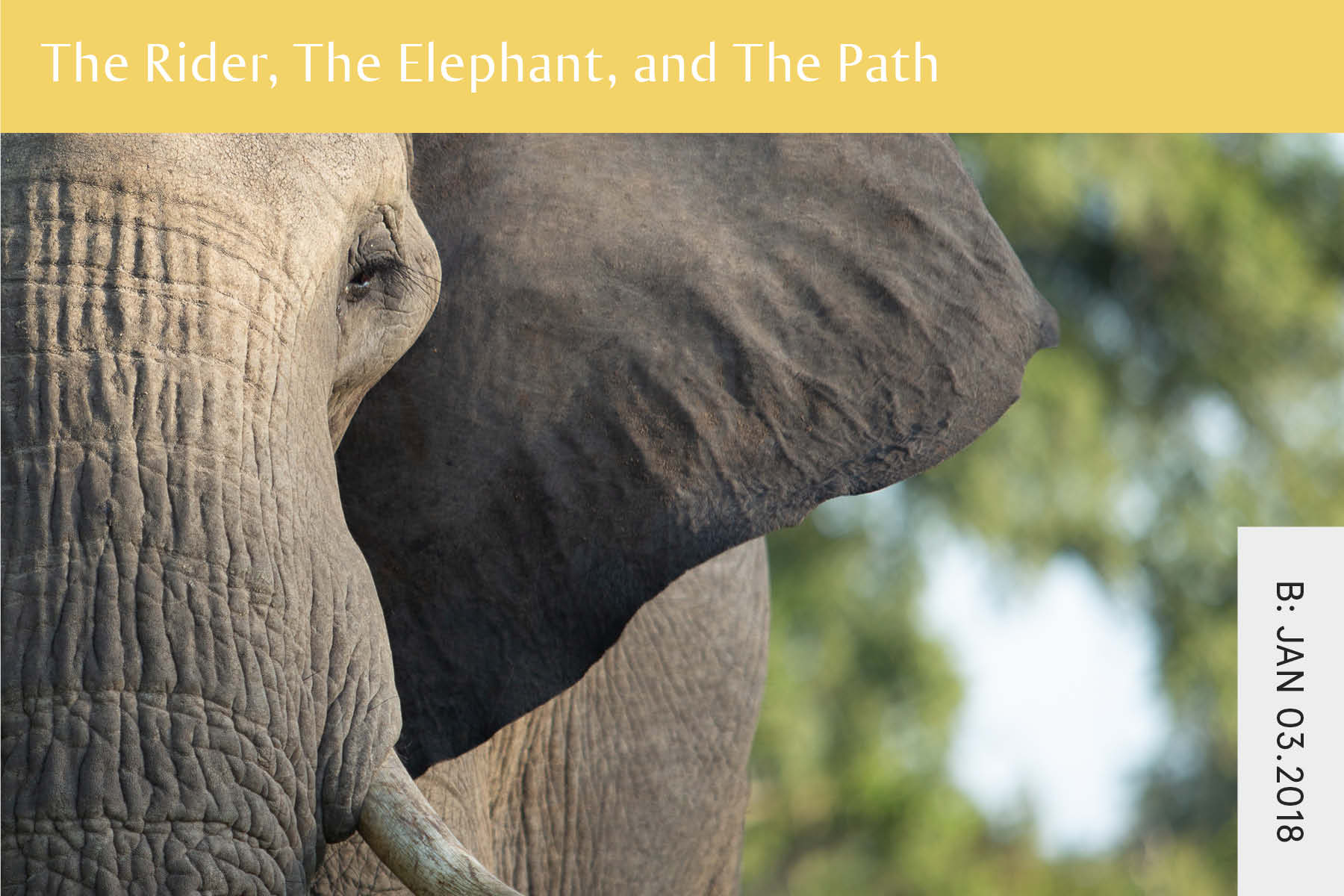


The Rider The Elephant And The Path Seven Health Intuitive Eating And Anti Diet Nutritionist



The Elephant And The Rider Youtube
Part 2, Motivate the Elephant;Elephant, and Path ( from the book) ( in your brain ) is a metaphor for The Rider The rational mind The Rider loves to contemplate and analyze, doing so with a negative bias, almost always focusing on problems Typified by the prefrontal cortex, the area of the brain that looks for patterns, makes plans, predicts the future, monitors the self, and attempts to distinguish between and suppress animal instincts rather than solutions
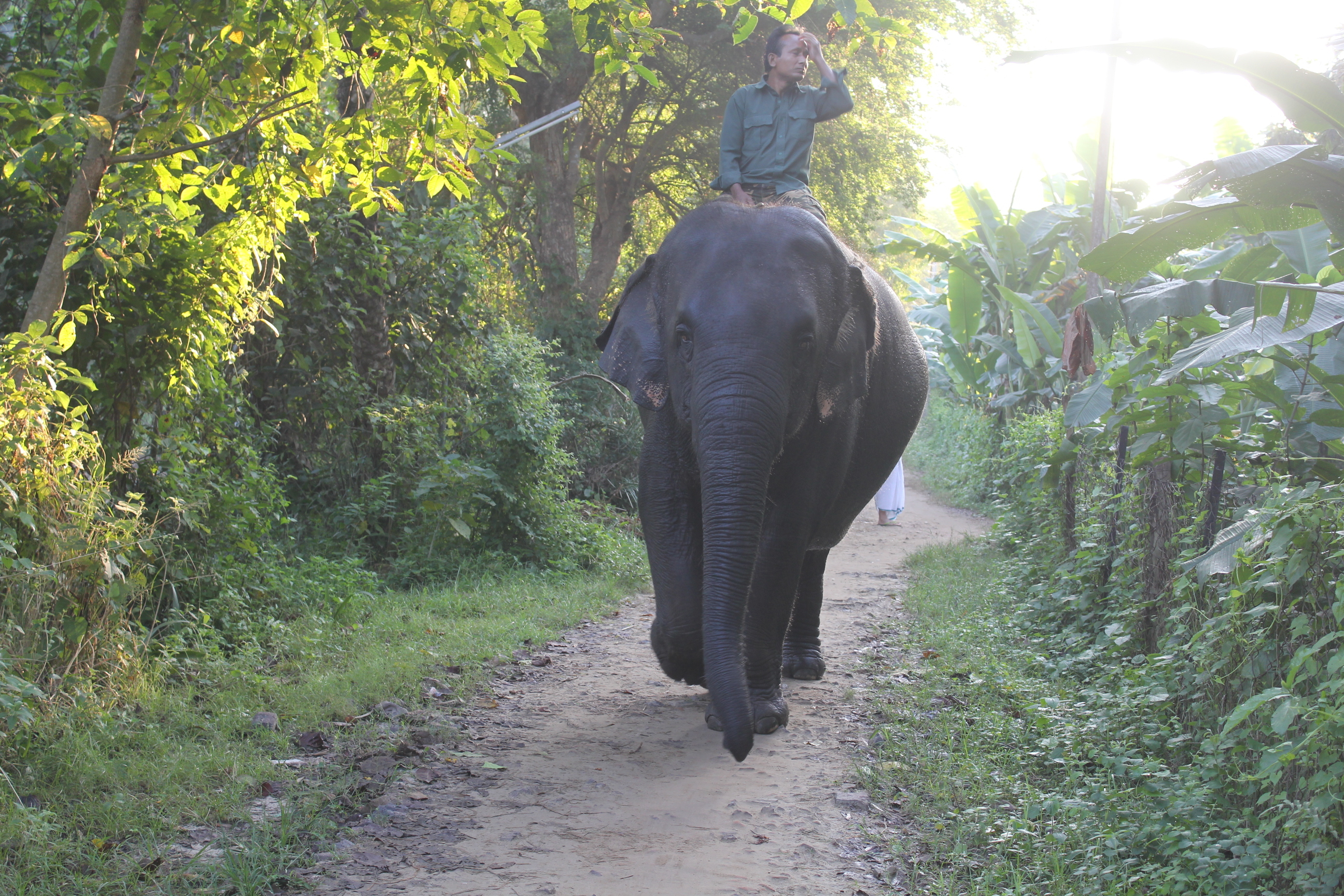


The Elephant The Rider And The Path Residential Systems


Discipline Is A Garbage Strategy Bang Fitness



How Riding Elephants Can Help Energy Efficiency In The Office Guardian Sustainable Business The Guardian


Http Www Newera Com Info Anderson Pdf



Why Did You Do That Crossfit By Design



Elephant Riding Wildlifeorissa



Man Riding Elephant On Breaking Puzzle Path Stock Photo Download Image Now Istock



Take Your Team On A Fearless Journey Management 3 0



Switch How To Change Things When Change Is Hard Book Summary Agileleanlife






Switch How To Change Things When Change Is Hard Book Summary Agileleanlife


The Elephant And The Rider Change When Change Is Hard



Man Riding Elephant Water High Resolution Stock Photography And Images Alamy



Motivating Self And Others Influence The Rider Elephant And Path Kathy Stoddard Torrey
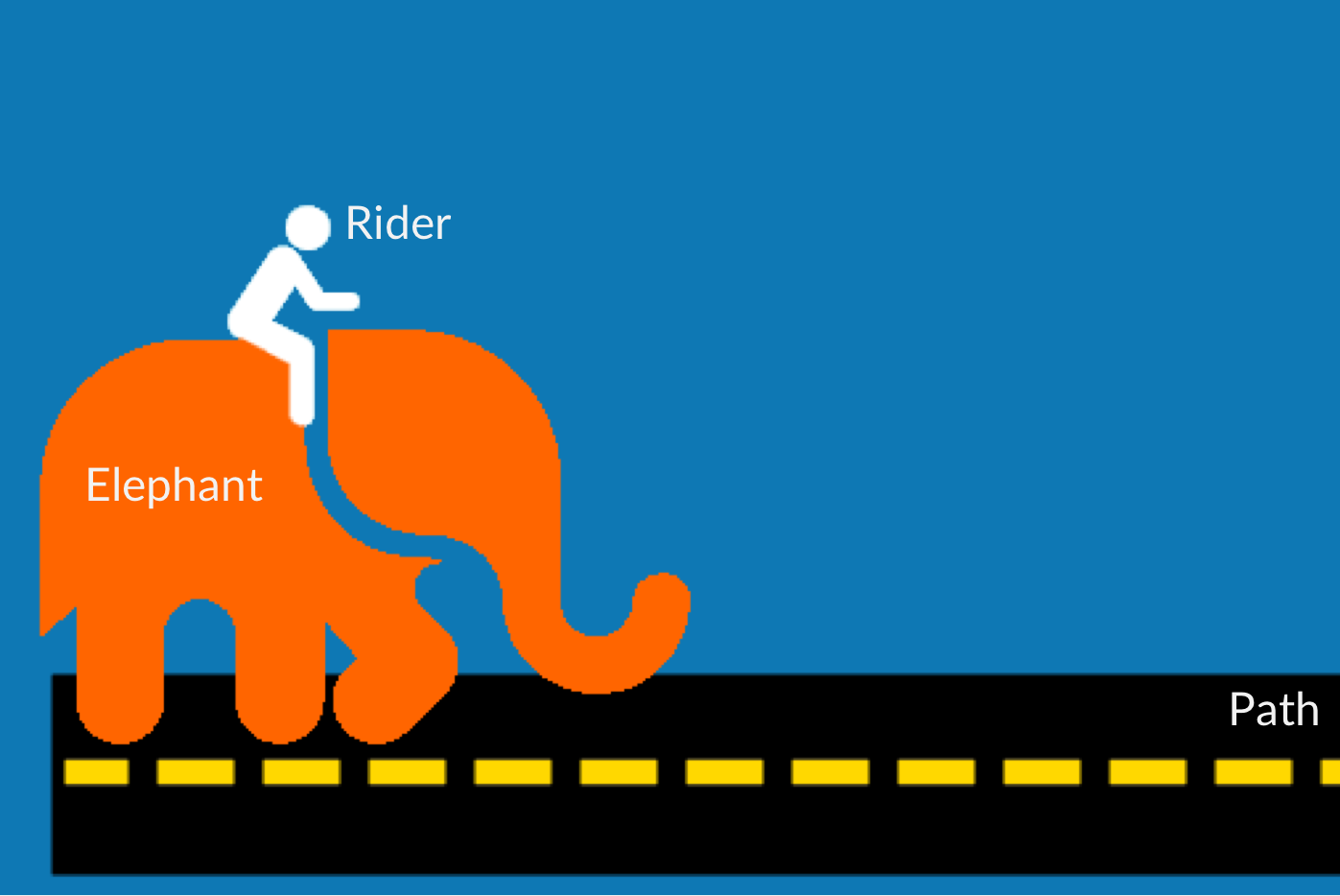


Motivating The Elephant In Us Every One Of Us Have An Elephant In Us By Lean Station Medium



Steve Barnett My Sketchnotes From The Talky Bits Of Wimheemskerk And Eddybruin S Keyshop Worknote Keynoteworkshop This Morning At Agiletd Motivate The Elephant Direct The Rider Shape The Path The
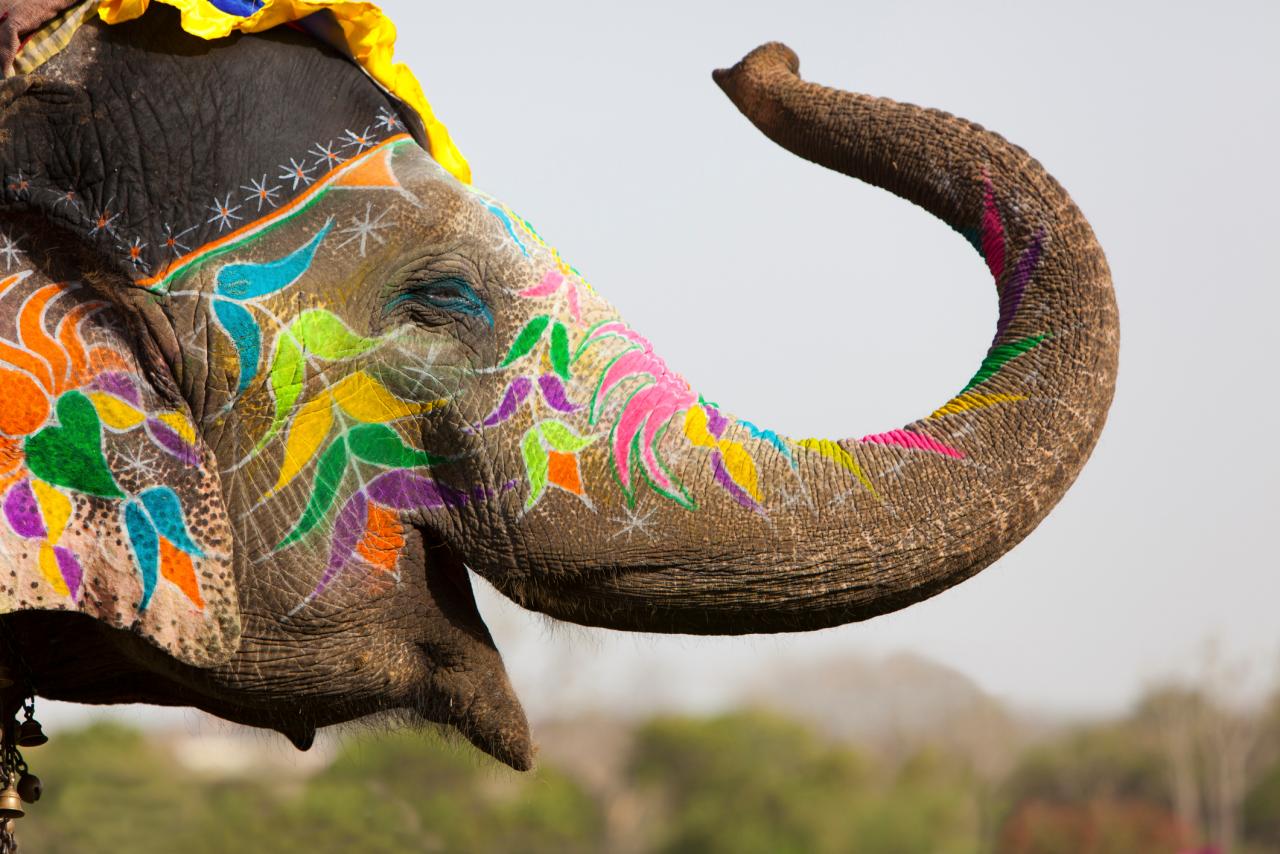


Animals Up Close A Guide To Ethical Elephant Tourism Travel Channel



The Rider And The Elephant S Path Consciousness Directing Subconsciousness Neurocognitive Therapy
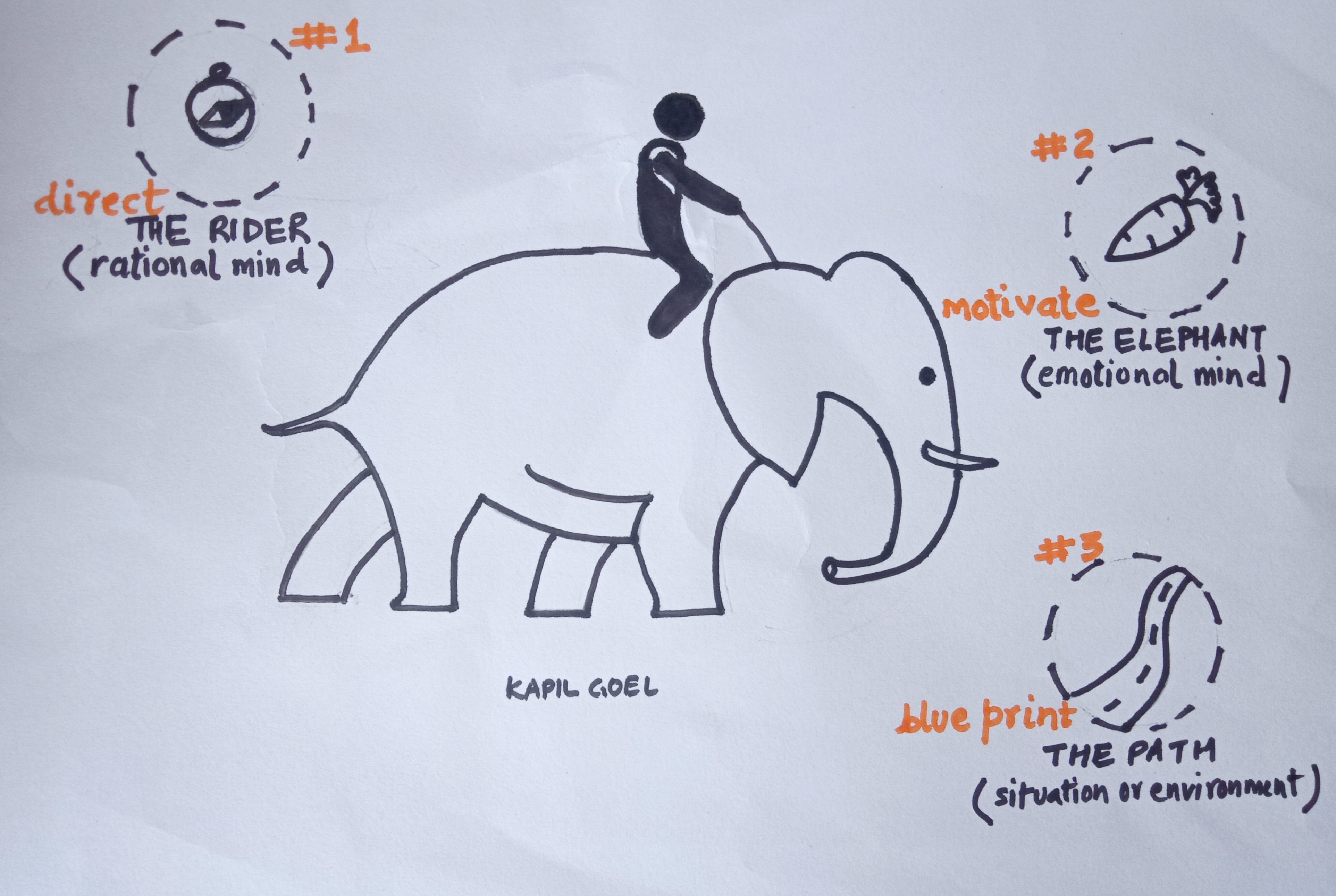


9 Ways To Change Hard Behavior Using This Million Dollar Method By Kapil Goel Illumination Medium


What Is The Rider And The Elephant Metaphor Quora



The Elephant The Rider In Motivation Elephant People Problems



The Elephant The Rider Amp The Path Stop Over Complicating Your Km


Gps Trackers In Fake Elephant Tusks Reveal Ivory Smuggling Route Goats And Soda Npr



The Rider The Elephant And The Path Jesus Gil Hernandez
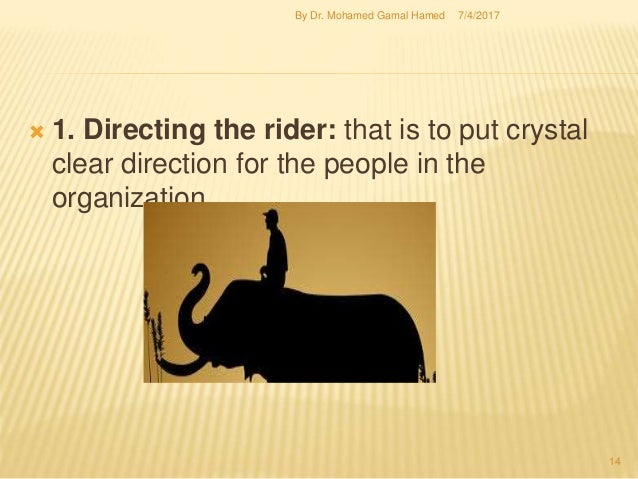


The Elephant The Rider And The Path How To Make Change Stick
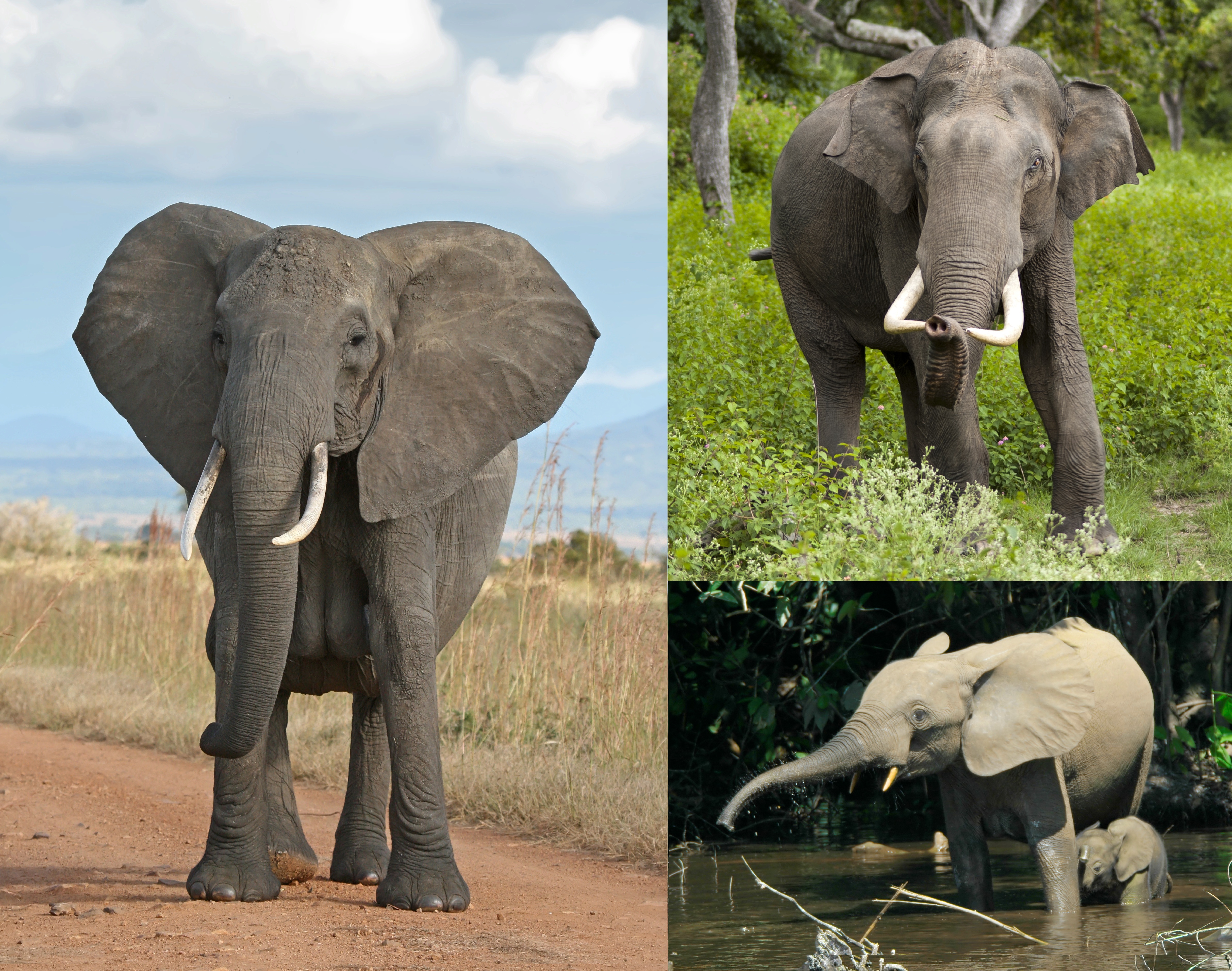


Elephant Wikipedia



This Is How To Stick To Your Habits Backed By Research Patrik Edblad



3 Tips On Being More Productive This Elephant Metaphor Can Help
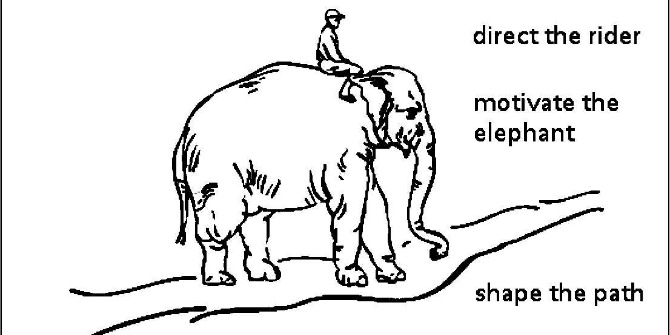


Elephant Paths Wider Methodological Transparency Is Needed For Legal Scholarship To Thrive Impact Of Social Sciences



Review Switch How To Change Things When Change Is Hard Henny Portman S Blog


Q Tbn And9gcq1gfpnckwnhyf02nyoafar9jt1qwwoeucz K3bgav23royz2it Usqp Cau
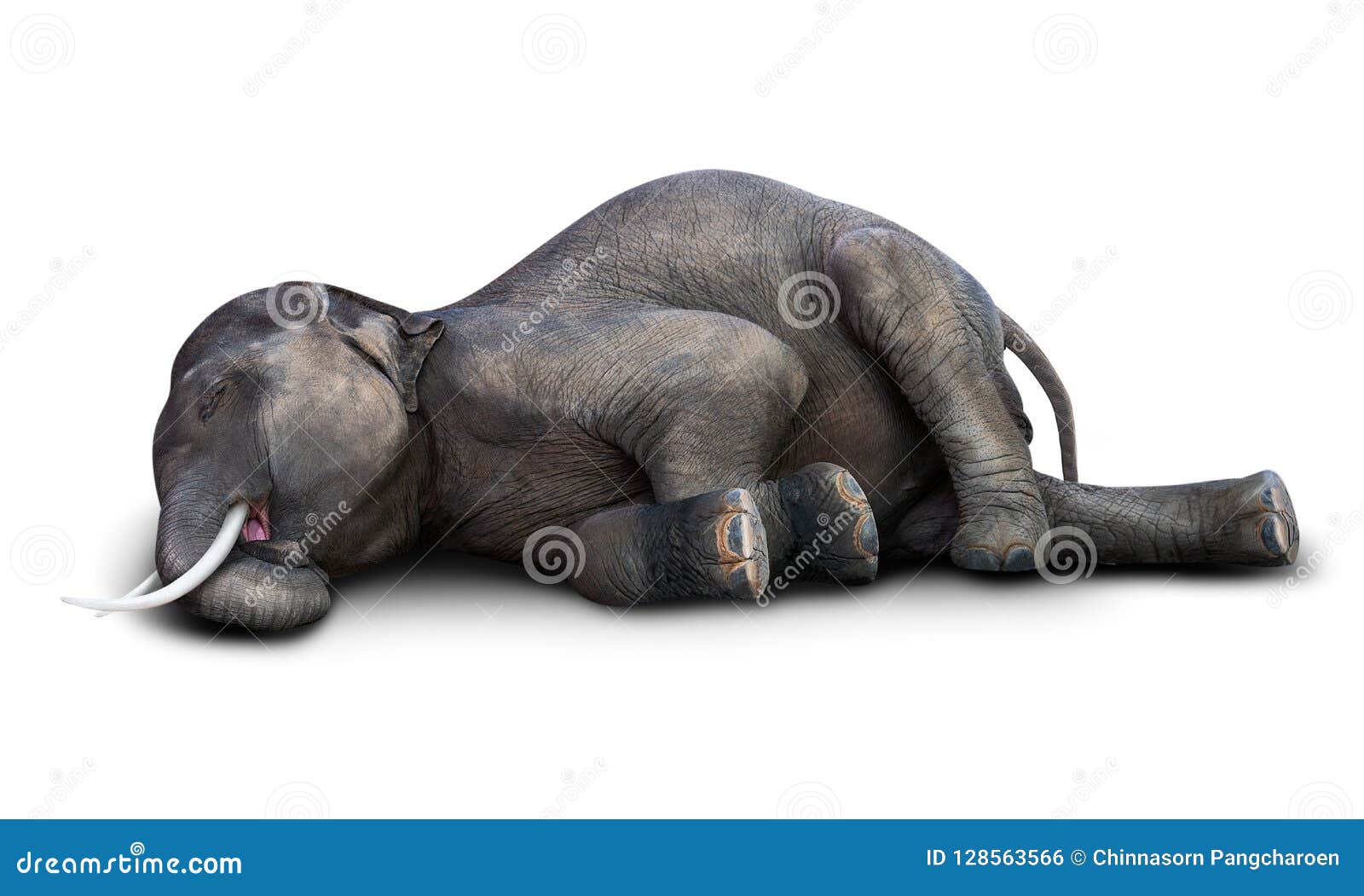


797 Dead Elephant Photos Free Royalty Free Stock Photos From Dreamstime
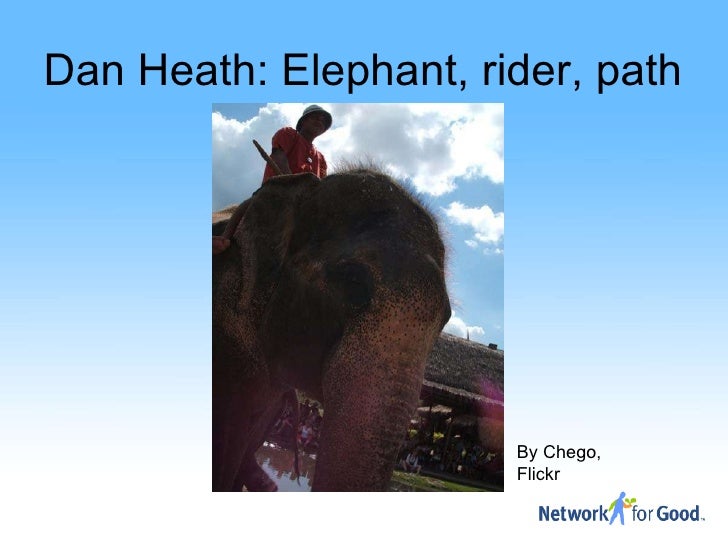


Dan Heath Elephant Rider Path



How Tourists Play A Role In Protecting Thailand S Elephants World Footprints


How Does Our Brain Make Decisions Readytomanage
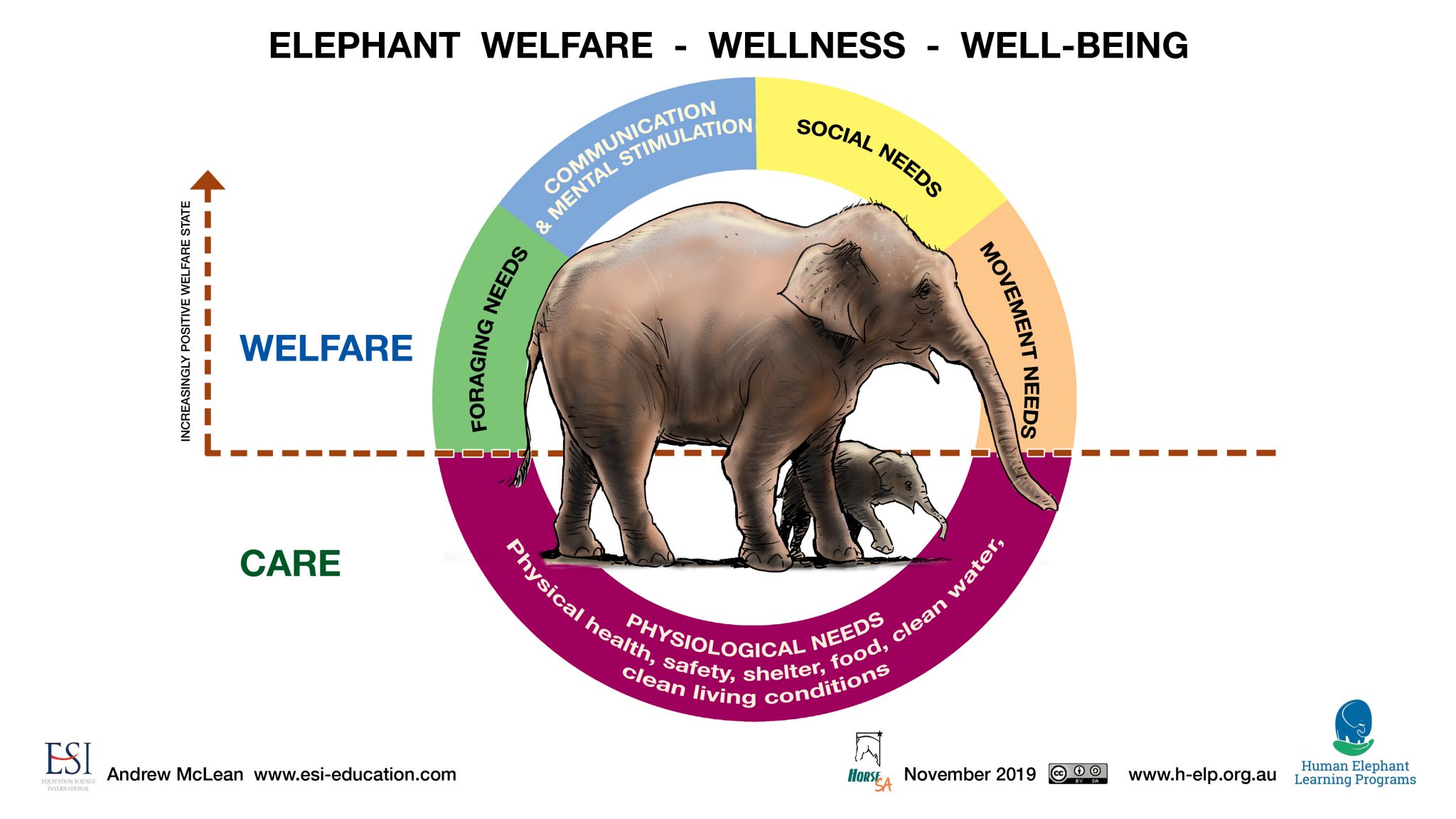


The Complicated Business Of Saving Elephant Tourism A Skift Deep Dive Skift



The Elephant The Rider And The Path A Tale Of Behavior Change Youtube



Rider Elephant Path Connecting Your Actions To Your Goals



Addressing The Elephant In The Room Or The Brain


The Elephant And The Rider On Vimeo



Switch To Agile Elephant Rider Path Boardview
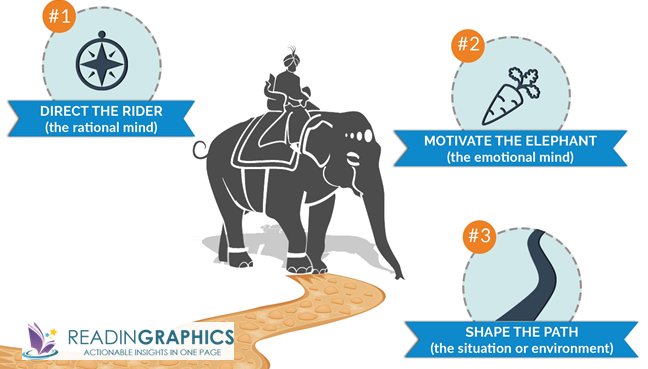


Readingraphics Who Are The Rider The Elephant And The Path And What Psychological Analogy They Are Representing Read All About It Here T Co J3f6roijwf Change Changeishard T Co Xesmdj94he



How Are You Riding Your Elephant Sunshine Coast Daily



The Best Elephant Sanctuary In Thailand And Other Ethical Wildlife Experiences



Privacy By Design Archives 3pmobile
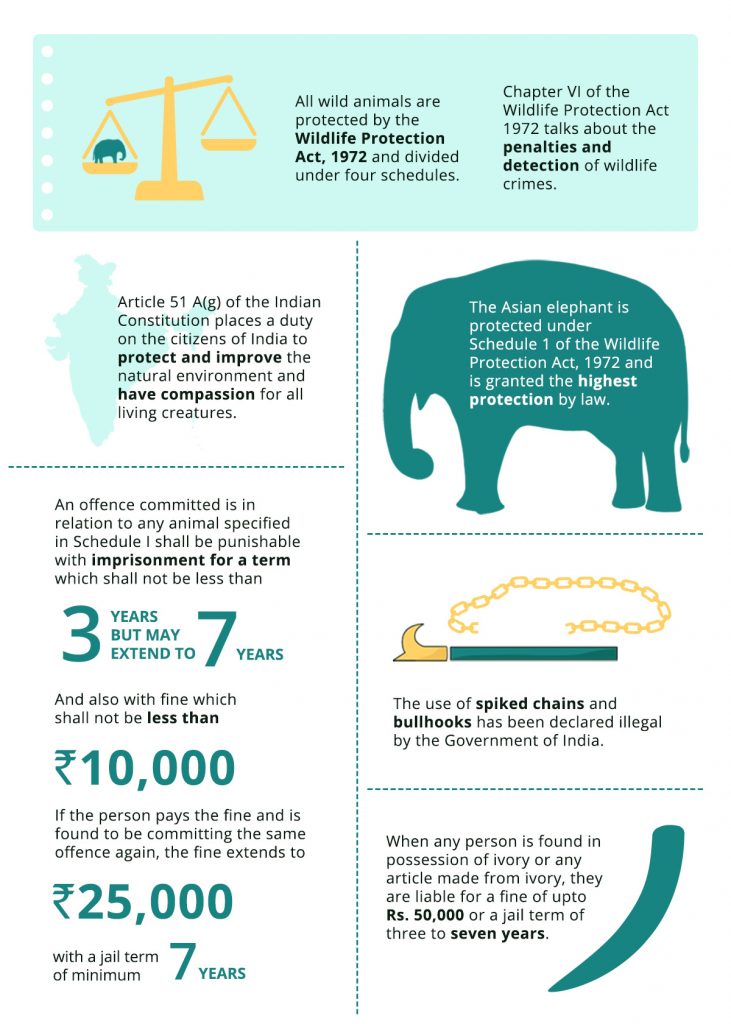


Tbpkvkqbrdhaxm



Behavior Change The Elephant In The Roombetter Habits Better Body Lean By Habit Atomichabits Healthyhabits Weightloss Buildstrength Habit Thepowerofhabit



How To Play Feed Protect Elephants In Thailand Updated 21



Tibetan Elephant Taming Picture Series


The Elephant And The Rider Change When Change Is Hard



Resistance To Change And The Emotional Roller Coaster No Rules Just Words
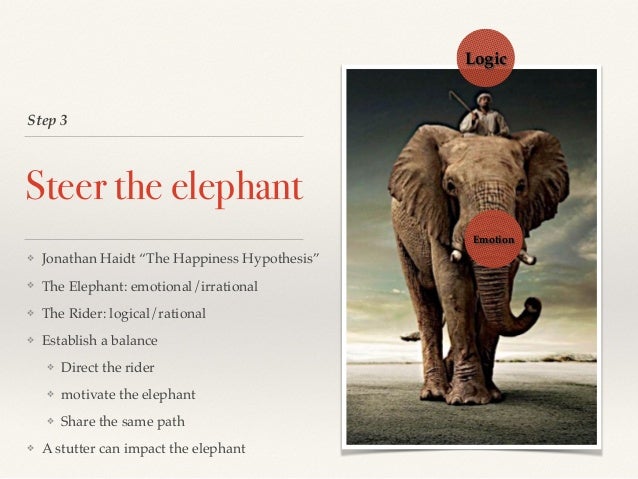


How To Confront An Elephant



Elephant Sanctuary Experience Khao Sok Silver Cliff Resort



The Elephant And The Rider
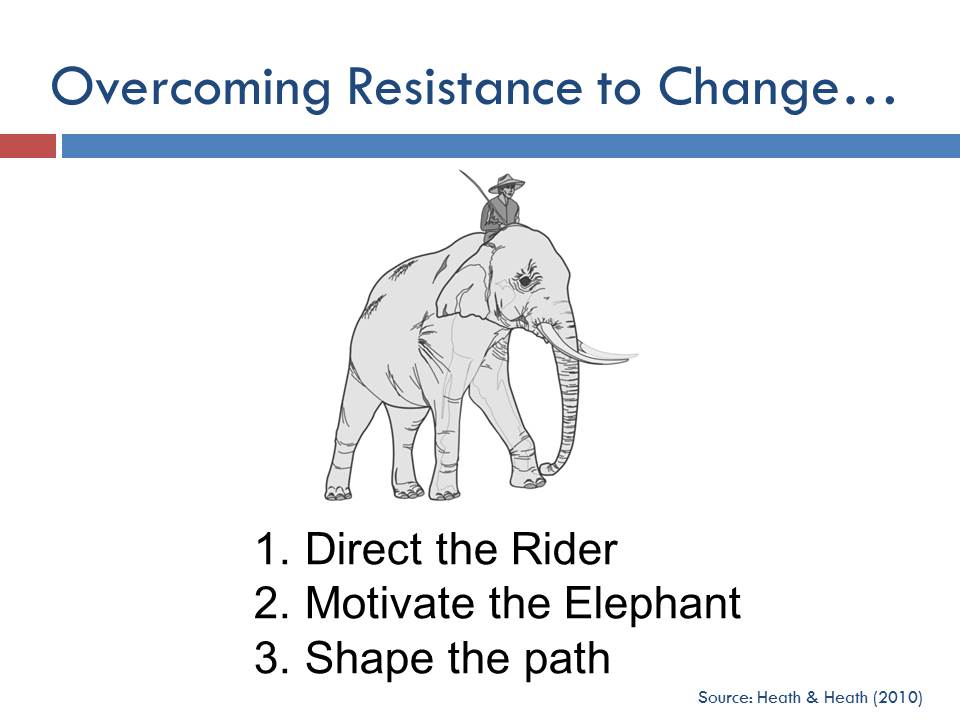


Elephant Rider Productnation
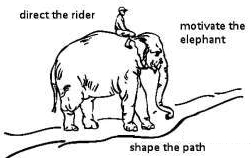


How To Change Things When Change Is Hard Lean East
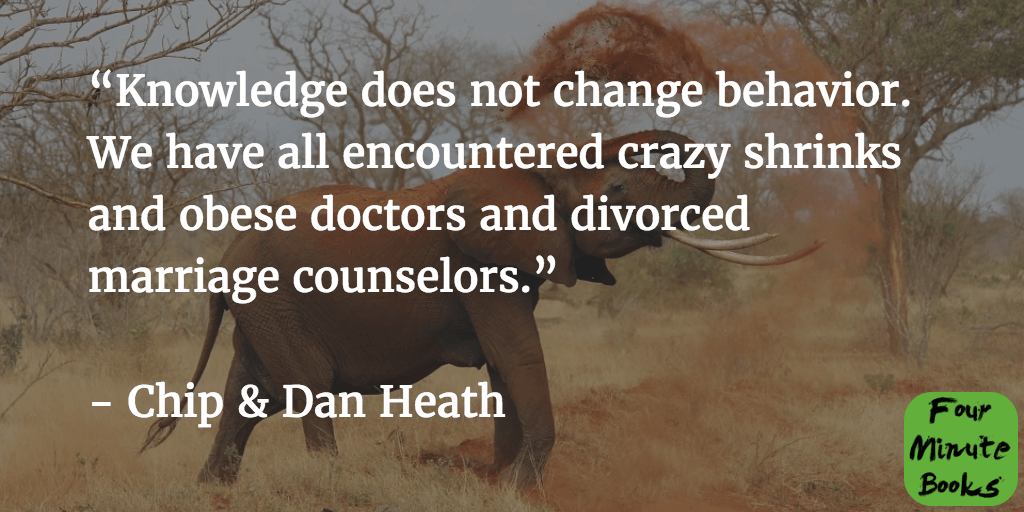


Switch Summary Four Minute Books



Dreaming Of An Elephant The Symbolism And Spiritual Meaning



The Rider The Elephant And The Path Visual Ly
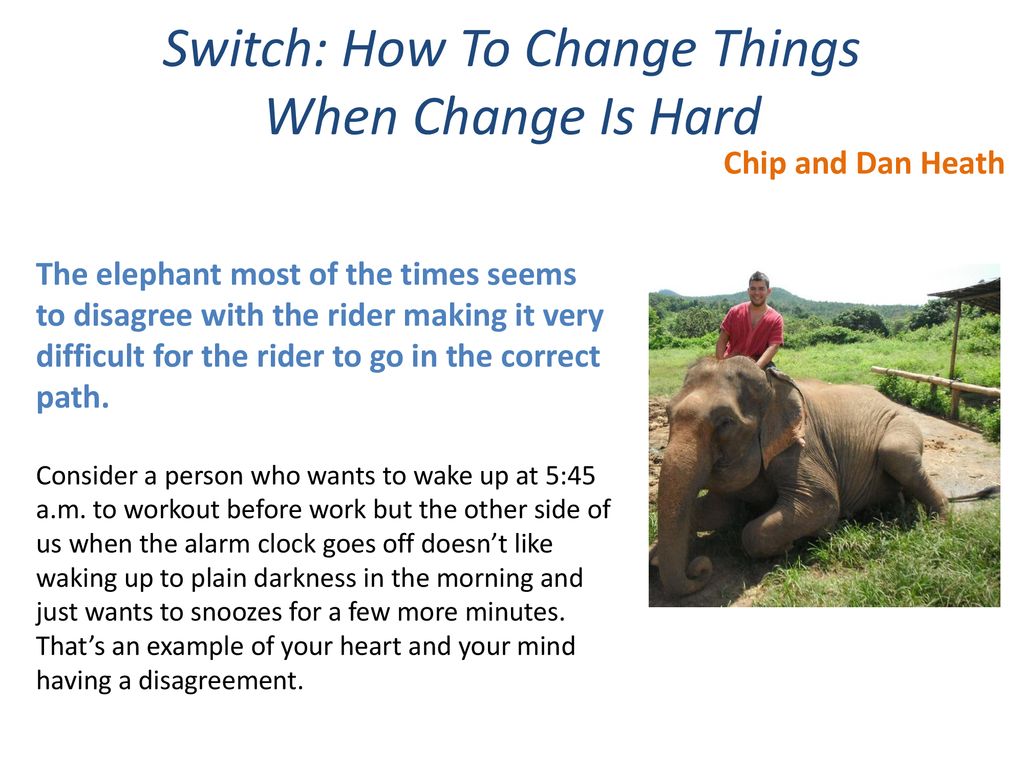


Lesson 9 Understanding Fear Of Change Ppt Download



The Huddle Sport And Beyond



Precision Nutrition Coach The Elephant Not The Rider Facebook
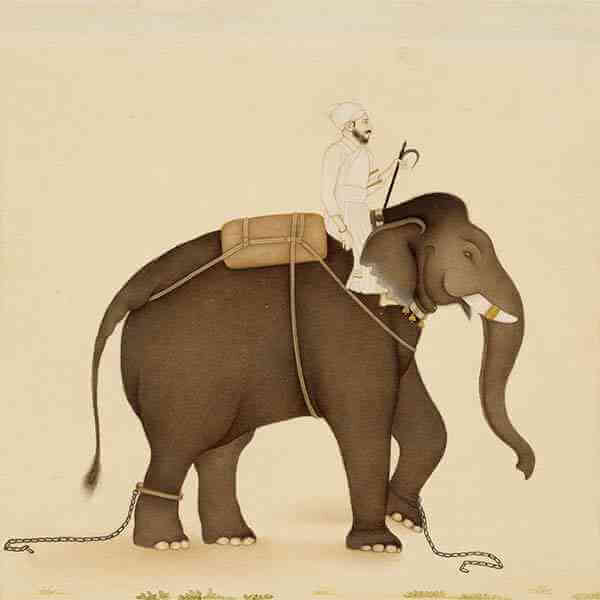


How To Change Things When Change Is Hard Carnegie Foundation For The Advancement Of Teaching



The Rider The Elephant And The Path Understanding The Process Of Change For Health Fitness



Alive With Ideas Blog Infographic How To Make Change Happen



The Elephant In The Room How The Animal Tourism Industry Fuels Cruelty Amuse


コメント
コメントを投稿